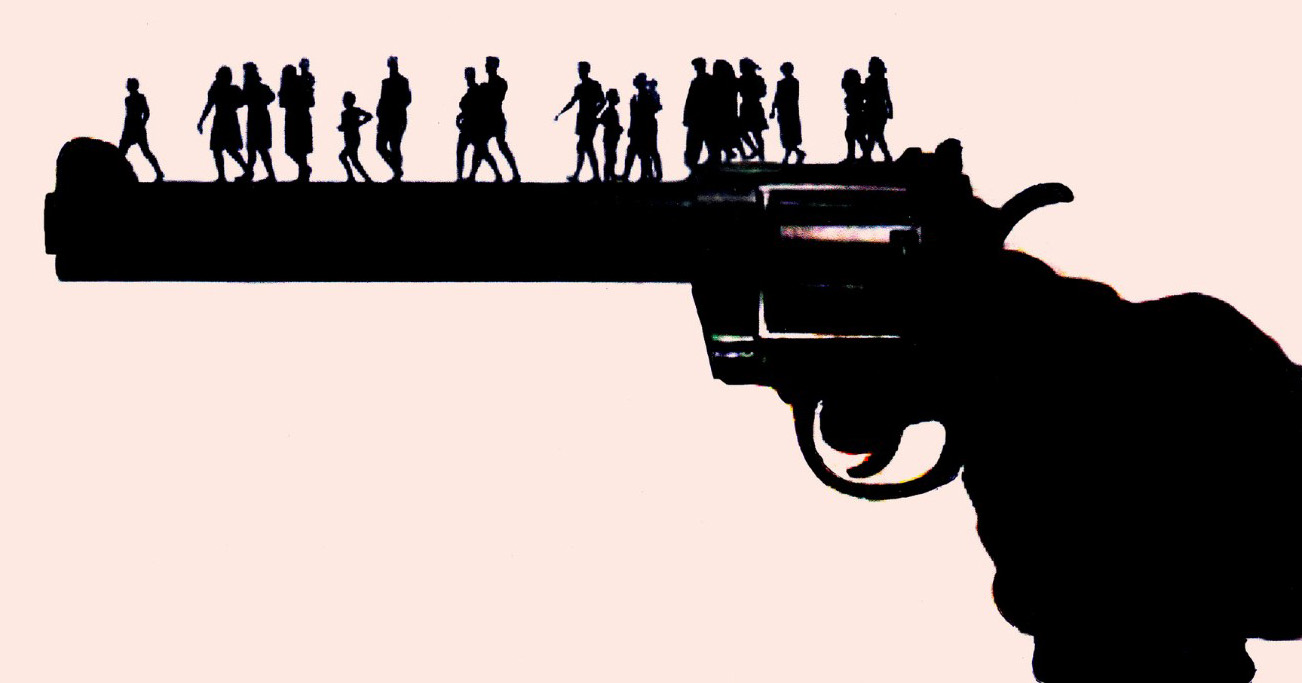As the country continues to be at odds over solutions to the mass shooting/gun control issues plaguing the nation, two professors at West Virginia University are sharing their expert pitches on behavioral pathways of school shooters and the likely long-term effects of such shootings on young people.
Jeff Daniels, professor of counseling psychology at WVU College of Education and Human Services, helped develop a model that focuses on detectable behaviors of school and workplace violence perpetrators as well as studying schools that have successfully averted shootings.
Daniels said the model aims to identify people “going down what we call the fatal grievance pathway.”
“A majority of mass shootings are grievance-based,” Daniels said. “For example, in the workplace, someone can be passed over for a promotion and they feel it’s unfair. They try to resolve it, but it doesn’t work out.”
Daniels said this grievance festers and at some point the person experiences a crisis, such as a divorce or health problem.
“They no longer have the ability to cope and develop a fatal grievance and fantasize how to resolve this,” he said. “Which could be taking out the people they feel wronged by.”
Mental illness is a secondary issue and is harder to predict, Daniels said.
According to Daniels, less than 1% of those with mental illness will engage in violent activity and it’s even less for those who become mass killers.
“A child’s background and family environment are also not predictive,” he said. “How many kids go to school with less-than-ideal families? They don’t become school shooters.”
Daniels said detectable behaviors such as saying they’re going to take a gun to school, surveilling the place of attack, or stockpiling weapons should be considered imminent threats.
“Collecting guns can be a baseline behavior. But if you start collecting guns and ammunition or knives and you haven’t done that before, that’s off baseline,” he said.
“If that’s accompanied by a kid’s grades tanking, that’s a pattern of moving off baseline we need to investigate. Parents have to know what their kids are involved in and teachers and school personnel must know, too.”
Recognizing the signs of a potential shooter cannot be the only prevention method, however.
During their research, Daniels and his students found schools that averted a shooting took active steps to break the “code of silence,” which he said was a common phenomenon across school shootings.
“Essentially, the code of silence suggests that when students hear of a threat or an impending attack, they often fail to tell anyone about it,” he said. “Breaking the code of silence was accomplished through establishing trusting relationships between faculty, staff and students, which often comes through treating all students with dignity and respect.”
According to Daniels, schools also worked to distinguish between snitching – or telling on somebody to get them in trouble — and helping – or telling on somebody to get them help.
“We also found that common across schools that prevented an attack was taking all rumors seriously and then acting on them immediately,” he said.
There is no nationally mandated training for active shooters, but many school districts choose to do it because it can be helpful to understand what to do in a crisis situation. However, not every school district can afford a threat assessment team that’s fully trained.
Keith Zullig, chair and professor, Department of Social and Behavioral Sciences, WVU School of Public Health, has been investigating behavioral changes in relation to stopping gun violence in U.S. schools.
Zullig warned about the potential far-reaching, long-term impacts on kids if, what he sees as a “persistent public health crisis,” remains unaddressed.
“At some point, if it is not already happening, this is going to operate as a ‘slow burn’ in the back of our children’s minds, resulting in them no longer feeling safe,” he said.
“It’s been reported that the drills youth have received caused emotional distress, where about 60% reported feeling unsafe, scared, helpless or sad as a result of experiencing active shooter drills,” Zullig said.
“Moreover, although about 58% of youth reported that active shooter drills teach them what to do if such a situation presents itself, they were uncertain of their ultimate benefit.”
In a 2020 Journal of Adolescent Health editorial, Zullig said students also reported they believe such drills may actually inform potential shooters of the actions schools may take in a given situation.
Zullig wrote this perception is not unfounded as The Violence Project has determined from a review of mass shooters from 1966 to 2019 that nearly all were current or former students and these students displayed warning signs before the incident.
According to Zullig, “Maslow’s hierarchy of needs tells us that when people’s basic needs, including safety, are not met, it becomes more challenging to advance to higher-order tasks that make being a human special – like sense of connection, love, friendship and a desire to become the most that one can be.”
Aside from action from lawmakers, both Daniels and Zullig seem to agree that a systems-level approach to creating safe, proper environments and proper training for school staff is a must.
“For instance, school leaders could focus on developing a strong school climate to foster trusting and positive relationships and connectedness among faculty, staff and students,” Zullig said. “A strong school climate, coupled with identifying facilitators and barriers to successful implementation of evidence-based strategies, could prove effective.”
“We can train teachers, administrators and counselors about preventing a crisis and how to handle it,” Daniels said. “The shooter in Texas had signs that people should have picked up on – the same with the Parkland shooter in Florida.
“How to take an understanding of what to look for and what to do is the direction my research has to take in the future,” Daniels said.




